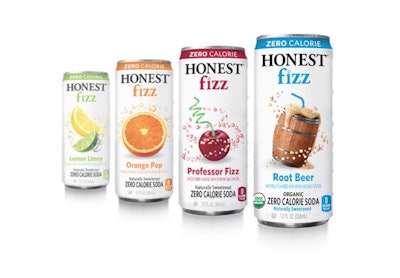Branding, marketing, and advertising all converge on the front panel of a retail package. Dedicated package designers would argue a package does all of that and more, and that nothing represents the brand more than the retail package. That’s because the package is the last place the consumer interacts with the brand prior to making a purchase decision.
There are certainly no hard-and-fast rules in front-panel package design, and some categories have much more freedom to experiment. But here are some guidelines that will help you define your brand on the front panels of packages on today’s cluttered retail shelves.
1. Determine the brand “position.” Know your company and your brand and your core values. Ask the hard questions again and again, and don’t underestimate the savvy of today’s consumers. Is there a unique value proposition? What is the primary product benefit, lifestyle advantage, or convenience gain? For a new brand or brand extension, remember that getting noticed is often the most important goal.
2. Explore the competitive environment. Use differentiation in a category for one goal—giving consumers a reason to pick up the package. Go to the retail environments where the package will live, and ask these questions from the perspective of the brand:
• Who am I? Do I represent something tangible? Do I inspire trust?
• What makes me special? Where do I fit in among competitors?
• Why would they buy me? What’s the most important benefit or advantage?
• How can I connect with consumers emotionally? What cues can I use?
3. Settle on a hierarchy. Information organization is a critical element of front-panel design. Broadly, the importance of the information hierarchy goes: 1) brand; 2) product; 3) variety; and 4) benefit(s). Analyze all the messages you want to convey and put them in order of importance. This doesn’t necessarily mean that they’ll be in that order, top to bottom, on the package, but it’s a good reference point to start with. Having a very organized, consistent information hierarchy across multiple product varieties helps your customer find the variety they desire and allows for a satisfying experience. Saving the shopper time in picking out a product should always be a priority.
4. Make one element the hero. Is the personality of the brand strong enough to stand on its own? Determine what is the most important single idea to communicate about your product. If you’re going to “own” something, what is that something? Align secondary brand messages under the primary umbrella message. If your brand is the hero, consider “locking in” a tagline with the logo. But make sure you’re committed to that tagline for the long haul. Otherwise, look for inspiration outside the category, which can often lead to breakout design. Use shapes, colors, illustrations, and photographs to reinforce the hero of your brand story. Above all else, make it easy for repeat buyers to find you the next time.
5. Keep it simple. Less is often more—communication-wise. Be succinct, both verbally and visually. Three main visual cues are all that the typical eye will tolerate. Successful package design is often an exercise in constraint. Remove overloaded messages on the front panel. Limit marketing claims and benefit statements. Any more than two or three, and the points will be counterproductive. Too many benefits will dilute the core brand message, and it will actually cause the consumer lose interest in the store aisle. Remember, most packages have secondary panels for more information. That’s where shoppers look when they want to learn more. Use the secondary panels, but don’t skimp on design for those either. If secondary panels are unavailable, consider a hangtag to tell a deeper brand story.
6. Manage stakeholder expectations. Expect some stakeholders to want to put all the information or marketing claims they have on the front panel. Remind them that a package is not an advertisement. Be prepared for the counter-arguments by having a repeatable design development process. Back the process up with checkpoints and transparency and show progress with visual aids. Explain how the process is both expansion and contraction, and have everyone sign off on the process before starting. Quickly develop three to five options so you can establish a common language to talk about the objectives. Be prepared with questions and suggestions should a stakeholder come to you with a printer or converter already in mind before design begins.
7. Communicate value visually. Of course, having a transparent window that shows the product inside is almost never a bad idea. Consumers want visual confirmation of the choices they make. Aside from that, you can say things non-verbally with shapes, design, graphics, and colors. Use the elements that will best communicate attributes and equities, sensations and feelings, emotional associations, and textures. Create an association with a sense of place. Suggest use occasions with graphics that have the elements of that use occasion. Involve a lifestyle. Today’s consumers judge products in relation to how the values of that brand fit into their values and lifestyle. Create a singular “reason to believe” that is capable of closing the sale in isolation.
8. Be mindful of category-specific rules. Each retail category has its own conventions. Some should be followed religiously. Some are important because bucking the convention can set a newcomer brand apart. For food products, however, the product itself should almost always be the hero. Spend the money on production and printing to create a photorealistic representation of the ideal serving suggestion. Conversely, for pharmaceutical products, the brand and product’s physical characteristics can be secondary—sometimes even unnecessary. The parent brand logo may not need to be on the front panel. Instead, emphasize the name of the product and what it does. Across all categories, though, it’s advisable to err on the side of less clutter on the front panel.
9. Don't forget findability and shopability. Learn how consumers shop the particular category you’re in. Make sure they won’t be confused by the format or the information hierarchy. Remember, cognitively and psychologically, colors communicate ahead of everything else. Next come shapes. Words matter, but mostly as a support role. Words and typography are for reinforcement, not high-level brand communication.
Findability can be either about having a brand-first strategy or about creating a “blocking” element in the store aisle that draws shoppers in. Shopability is about having a consistent system of colors, shapes, materials, or front-panel hierarchy that guide both new and repeat shoppers in finding the specific product and variety he or she desires. If there are multiple lines under a parent brand, consider good/better/best strategies that indicate each value proposition clearly and succinctly. For instance, the relative strengths of different products in a line can be indicated by “strengths,” or relative saturations, of color.
10. Plan for future brand extensions. A brand that is flexible enough to extend to other categories also has a core brand identity that it owns. After that, a successful brand platform is one that can grow by adding product varieties or lines, or extending outside its original category. Test the versatility of a front panel’s design by applying it to new products and to new categories. Look at a wide swath of imaginary products and extensions, not just the flagship variety. Make sure they all work together, united as a brand but easily understood as separate offerings.
Even plan for future redesigns of your core product line. Don’t inhibit the future growth of your brand by creating a platform that is not both extendable and flexible.
Liked this article? Download the Labeling Playbook here. Download the Package Development Playbook here. Download the Flexible Playbook here.



























